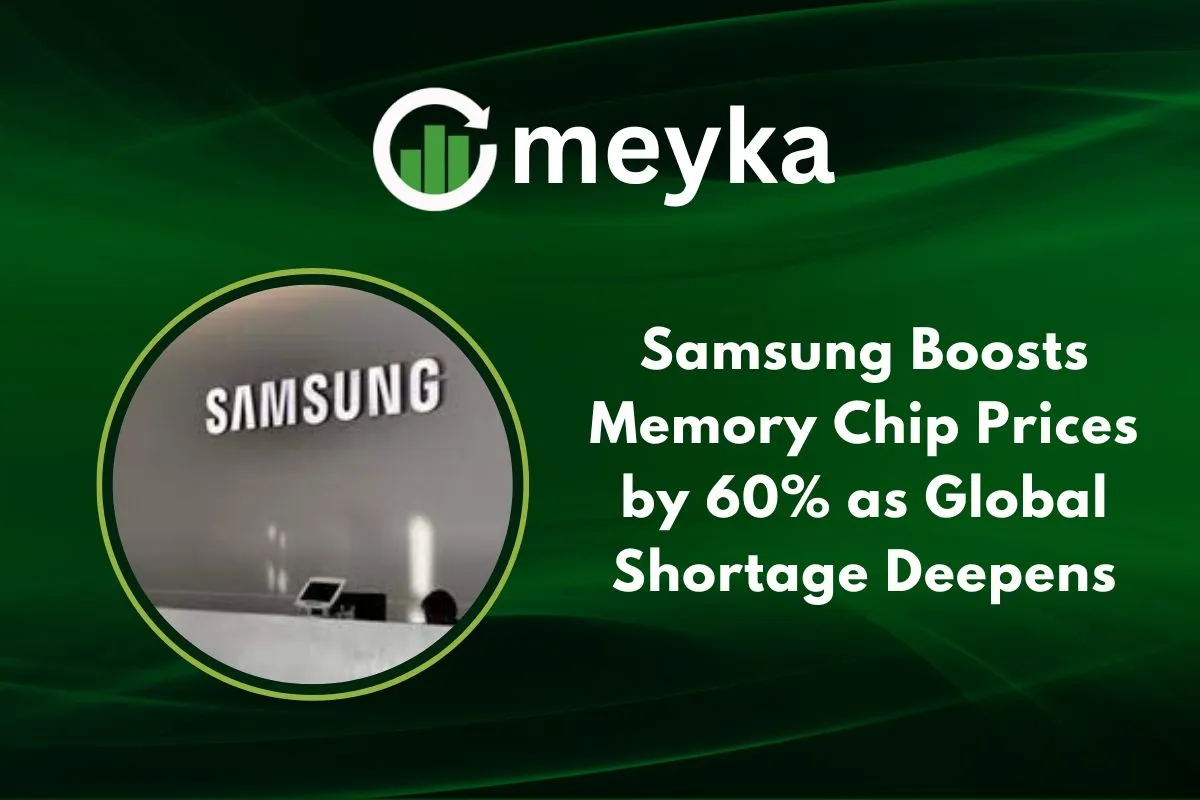Samsung Boosts Memory Chip Prices by 60% as Global Shortage Deepens
We’ve seen Samsung Electronics (Samsung) quietly push the price of its memory chips up by as much as 60 %, and that matters a lot for the tech world and for us as consumers. These chips power servers, cloud systems, smartphones, laptops, and pretty much everything that needs fast data work. Behind this move lies a deepening global shortage of memory chips, driven by rising demand for AI and data centres. With Samsung stepping up its pricing, we’re entering a phase where the cost of tech may well rise, and where the decisions made in chip fabs ripple through to our pockets.
Background on Samsung and Memory Chips
Samsung is one of the global leaders in memory‑chip manufacturing. It produces DRAM and NAND memory modules used in servers, PCs, mobile devices, and high‑performance computing. Memory chips are key components: they temporarily store and move data so other parts of a device can work fast. In recent years, demand for memory has surged, especially because of AI, cloud computing, and data‑centre expansion. Samsung’s role in the supply chain means its decisions about pricing, production, and supply have an outsized impact on the wider industry.
Reasons Behind the Price Increase
So why has Samsung raised memory‑chip prices so sharply? Several reasons:
- Demand is spiking. With the huge growth in AI, data center, res, and high‑performance computing, the need for high‑bandwidth memory (HBM) and large‑capacity DRAM has jumped. Samsung noted that “customers’ demand will exceed our supply” in the coming years.
- Supply is tight. Production capacity for some memory types is constrained. The shift toward advanced chips (for AI) means less capacity for standard memory, creating pressure elsewhere.
- Samsung’s market position gives it pricing power. Because Samsung is a major memory‑chip supplier, it is in a strong position to raise contract prices. For instance, its contract price for a 32GB DDR5 module is reported to have jumped from $149 to $239 in two months.
- Strategic timing: Some sources say Samsung delayed its usual pricing announcement for October and then hit higher rates in November, signalling stronger control over supply contracts.
Impact on the Tech Industry
What does this mean for the tech industry and consumers?
- Tech‑manufacturers face higher input costs. Firms that build servers, PCs, or mobile devices will see the memory chip portion of their bills go up. That cost may be passed onto consumers. For example, some reports say Samsung may hike phone prices because memory costs have risen.
- Smaller players and OEMs may struggle. Big firms may negotiate long‐term supply deals with Samsung, but smaller ones might face a shortage or pay higher premiums. This could reduce competition or slow product launches.
- Downstream price pressure. The ripple effect: memory is a key part of many devices. If memory cost rises 30‑60 %, the final product cost might climb. Reports say major server builders are already “accepting that they won’t get nearly enough product”.
- Strategic supplier shifts. Companies may begin looking for alternative suppliers, more local production, or chip redesigns that use less memory, all to manage cost risk.
- Tech roadmap alterations. Because memory supply is tight, some firms may delay the launch of memory‑intensive products or shift resources to parts of the business less impacted.
Global Semiconductor Market Context
This isn’t just about Samsung; the memory‑chip market has been under pressure for several years. From 2020 to 2023, the world experienced a broad semiconductor shortage. Memory chips in particular are now entering what many are calling a “super cycle” of demand. For example, analysts at TrendForce indicate prices for DRAM and NAND have already increased by up to 30 % in recent months. Regionally, this affects supply chains from South Korea to Taiwan to China. For instance, Semiconductor Manufacturing International Corporation (SMIC) in China says its customers are delaying orders for other chips because they can’t secure the memory supply.
In short, memory supply is a critical bottleneck. The combination of strong demand growth (especially for AI) and constrained supply capacity sets the stage for higher memory prices, and Samsung is one of the key players shaping this environment.
Potential Long‑Term Effects
Looking ahead, what might we expect?
- Persistent higher prices. Many industry observers expect the tight supply (and thus high memory prices) to continue well into 2026.
- Product cost inflation. As memory costs get baked into more devices (phones, PCs, servers, even cars and IoT devices), we may see a broader inflationary push in tech hardware.
- Strategic shifts to alternatives. Companies may invest more in memory‑efficient architectures, chip redesigns, the reuse of older modules, or accelerate shifts to alternative memory technologies.
- Supply chain diversification. Because risks are bigger, firms may seek to reduce dependency on a single large supplier. They might source from smaller firms, build local capacity, or sign long‑term contracts to lock pricing.
- Long-term innovation. When memory costs are high, innovation might tilt toward software efficiency, memory‑lite solutions, or cloud strategies that reduce local memory needs.
- Competitive reshaping. Firms like Samsung already benefit from strong pricing power. Others may struggle to keep up or may be forced out of certain memory segments. Over time, this may reshape who dominates memory supply and how the ecosystem works.
Conclusion
Samsung’s decision to increase memory chip prices by up to 60 % is more than just a business move; it reflects a turning point in the tech‑hardware world. With strong demand, tight supply, and rising costs, the ripple effects will touch manufacturers, tech buyers, and possibly end‑users. As we move forward, we need to watch how memory supply evolves, how device makers adapt, and how costs come into play for consumers. In the era of AI, we’re all part of this story, and staying aware means we’re better prepared for the changes ahead.
FAQS
Samsung is under pressure because its AI‑memory chip sales are not growing fast enough. Its HBM3E chips still lack key certification. Plus, rivals are strong, and profit is dropping.
Yes. Samsung makes many types of memory chips, like DRAM and high‑bandwidth memory (HBM), used in data centers and AI workloads.
Yes. Samsung’s foundry builds custom AI chips using advanced processes.
Disclaimer:
The content shared by Meyka AI PTY LTD is solely for research and informational purposes. Meyka is not a financial advisory service, and the information provided should not be considered investment or trading advice.






